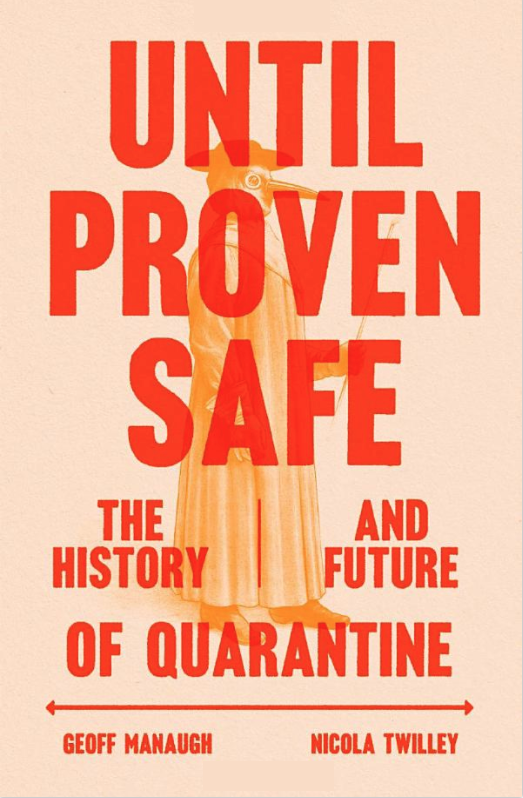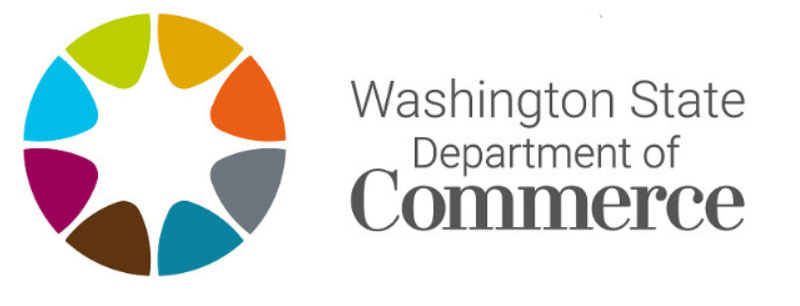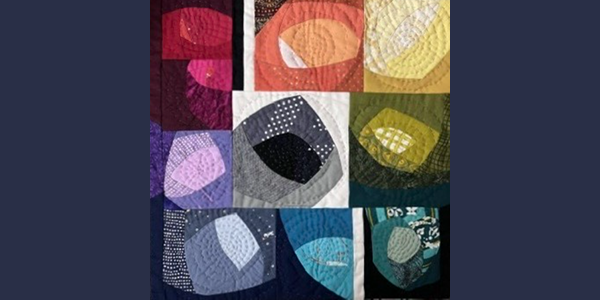||| BOOK REVIEW BY JENS KRUSE

Geoff Manaugh and Nicola Twilley, writers for many national magazines, open their book Until Proven Safe: The History and Future of Quarantine with the following scene:
On March 6, 2020, a King County, Washington, health department van pulled up in front of an Econo Lodge motel outside Seattle. An employee clad in white coveralls hopped out, grabbed tools from the back of his van, and proceeded to paint the motel’s still-glowing sign pitch-black. The red and yellow colors of the chain’s familiar logo quickly disappeared, replaced by the matte-black rectangle that loomed over the street like a pirate flag. Ominous, deathly, its former welcoming light now extinguished, the motel had become a quarantine facility. (3)
A few pages later, they write:
By the end of March 2020, a mere three weeks after King County health authorities painted over an Econo Lodge sign, fully 20 percent of the Earth’s population was living in a state of isolation or quarantine, an estimated 1.7 billion people. Within a week, that tally would more than double, with Agence France-Press estimating that ‘’ half of humanity’’ was now undergoing some form of medical
detention. (15)
In the ensuing sections – ‘’Building Quarantine, Animal, Vegetable, Mineral, Alien, Distance Assistance’’ – the authors use a total of nine chapters and nearly 350 text pages to explore the history, present, and possible future of quarantine.
In other words, the ambition of this book is encyclopedic, but –luckily for us readers – the authors keep their account engaging and almost uniformly fascinating, whether it is in their travelogue of the remnants of medieval quarantine stations and lazarettos, their survey of our attempts to keep plant pest and diseases from infecting and destroying valuable crops, to their descent into the elaborate tombs we have constructed to house nuclear waste for almost unimaginable durations of time, to the coming of the use of big data mining to potentially achieve quarantine or isolations by way of algorithms.
The latter development, needless to say, involves complicated and worrisome questions of privacy, and of state, or even corporate, power and control. At one point, the authors invoke the not so far fetched possibility of smart apartments and smart houses automatically locking in their residents when the algorithmic analysis of the data collected by these ‘’smart houses’’ seems to justify, even demand, that they are turned into instant quarantine facilities.
Throughout the book the authors make clear that quarantine has been from the beginning, and still is now, a deeply ambiguous and contentious public health measure, but also one that we, in an age that new infectious diseases, and therefore pandemics, will be more, not less, likely to have to use.
Towards the end of their first chapter, they say:
We realized that, by examining what, where, and why we quarantine, we were not only exploring the limits of scientific understanding but also excavating our deepest fears, biases, and sense of identity. Quarantine reveals how we define and police the perimeters of self and other, as well as what we value enough to protect – and what we are willing to sacrifice. All too often, we discovered, quarantine is flawed and leaky, even deeply unjust. Almost always it has been designed simply as a buffer, rather than thought through as a lived experience. Sometimes it is the only thing that has saved us from death and devastation. (36)
In other words, quarantine is a complicated and –- even under the best of circumstances – problematic and flawed tool. But it may also be utterly necessary. At some point the authors quote Martin Cetron, a doctor and public health specialist: ‘’You are not going to find anybody who is pro-quarantine. […] But the truth is, our most urgent modern biological threats have required us to roll back to our fourteenth-century tool kit (135).
Towards the end of their ‘’Epilogue,’’ Manaugh and Twilley leave us with these thoughts:
The future of quarantine, as we’ve seen, is certainly a question of technology – of testing, tracking, surveillance, containment, and control. It is a question of ventilation systems, plumbing networks, and extreme forms of waste disposal and burial. But it is also a question of civility, of a politics and culture of collaboration that allow for awareness of shared responsibility in the face of an unknown disease. The ability to respond to such uncertainty – and to prioritize the collective good by temporarily separating ourselves – requires cooperation and self-sacrifice, mutual trust and humility, from political leaders and citizens alike. (345)
Quarantine can and must also be culturally reclaimed as an act of personal responsibility, precisely to help avoid some of the dystopian acts of technological enforcement that otherwise seem imminent. If all quarantines presuppose their own failures, then we need to recognize that these
failures are, in fact, rarely technical; they come from willful resistance and misunderstanding of quarantine’s true stakes.
Quarantine exists not just to protect ourselves but to ensure the safety of others – of loved ones and strangers both. In the end, it demands nothing more of us than that we take the appropriate space and time; that we simply pause, before venturing out again, until proven safe. (349)
Geoff Manaugh and Nicola Twilley’s Until Proven Safe: The History and Future of Quarantine (New York: Farrar, Straus and Giroux, 2021) is available from the Orcas Library and can be obtained through Darvill’s Bookstore








